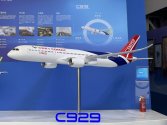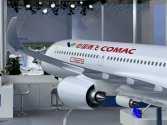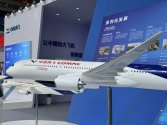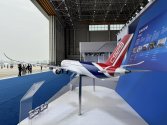More eco-friendly modifications for the C929?
2023-10-24 08:28:44chinadaily.com.cn Editor : Li Yan
The C929 has entered the preliminary design stage, with its carbon emission expected to be slashed by 60 percent, Science and Technology Daily reported, quoting head designer of the C919, China's first self-developed single-aisle aircraft.
Wu Guanghui, head designer of the C919 and chief scientist at Commercial Aircraft Corp of China, better known as COMAC, disclosed fresh details about the C929 during the International Forum on Green Aviation held in Hefei, East China's Anhui province, on Sunday.
Wu shared C919's achievements in the area of green aviation, as well as the green design philosophy of C929, which is in the preliminary design stage.
Compared with old similar models, C919's carbon emission is reduced by 12-15 percent, Wu said, adding that for C929, the goal is set at 60 percent.
Data from the International Energy Agency showed last year the aviation sector accounted for 2 percent of global carbon emissions. And the figure is expected to reach 25 percent by 2050, according to a United Nations report.
At present, Europe and the United States have released their green aviation plans. Earlier this month, China also issued a guideline, formulating the country's development plan for a green aviation manufacturing system between 2023 and 2035.
According to Wu, reducing the weight of airplanes is an important way to reducing fuel consumption and carbon emission. "The weight of ARJ21-700 has been reduced by over 600 kg. The lightest seat weights only 7 kg now, compared with the global average of 12-14 kg."
Based on a green design concept, a slew of measures are adopted to reduce fuel, noise and carbon emission of C929, Wu added.
Promoting sustainable aviation fuels (SAF), which is made from feedstock ranging from used fat, oil and grease to municipal and forestry waste, is the most effective method to reduce carbon emissions for the aviation sector, the newspaper said.
Regarding the exploration scope of SAF, Wu said, besides biofuel, other renewable fuels such as methanol and ammonia-hydrogen, should be paid more attention, exploring more possibilities for carbon emission reduction of the aviation sector.






